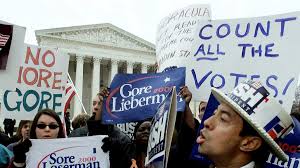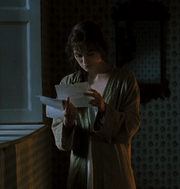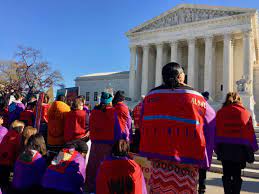Introduction
I was born in Leon County in Tallahassee, Florida on September 14, 2000. A month later, the most highly contested election in history occurred between Governor George Bush and Vice President Al Gore, initiating months of jurisprudence, years of public doubt in both the electoral process and the judicial system, and the introduction of a novel judicial philosophy containing serious implications for the present moment in 2021. Though the long term effects were not immediately clear, the post-election-night chaos was immediately apparent. The news spread nationwide with haste, but the core of the controversy was in my backyard, a mere 10 minutes away, at the Florida government headquarters. The entire election hinged on a few hundred votes – votes that may or may not be permitted to count. The media conglomerates called the election prematurely, resulting in a Gore concession he later retracted. There were lawsuits and citizens claiming partisanship within the court system. There were claims of voter fraud and tampering with election results. The echoes of the 2000 election in the 2020 election could not be louder.
I have never known a life of political stability, if such a thing ever existed. The world I entered was a post Bush v. Gore world – a post Bush v. Gore Florida, to be specific. Coming of age in this space, the legacy of Bush v. Gore permeated my cultural dialogue. Anytime an individual asserts that they are not planning to vote because “one vote surely won’t make a difference,” a standing army of Floridians awaits in the wings, anxious to remind a doubtful voter that just a few hundred votes in their own state once decided a presidential election.
In the per curiam majority opinion of the Supreme Court of the United States in Bush v. Gore, the court declared the following infamous words: “our consideration is limited to the present moment.” Therefore, Bush v. Gore was defined by the Supreme Court itself to be void of precedential value, and yet, the vestiges of this case remain apparent in the judicial system, legislative bodies, political discourse, and the population at large. Bush v. Gore initiated an unprecedented avalanche of electoral process jurisprudence that shows no sign of abating, greatly accelerated the growth of public doubt in election integrity, and gave birth to a doctrinal idea of constitutional law, the Rehnquist Theory, that would grant state legislatures exclusive authority, not subject to its ordinary law making procedures, to run presidential elections. The Rehnquist Theory of Constitutional Understanding, or the Independent State Legislature Doctrine, authored in Chief Justice Rehnquist’s concurring opinion, harbors major implications for enfranchisement, emergency procedures, and federalism at its core, granting this case continued relevance. Bush v. Gore was a true anomaly. Both sides of the court acted out of character – conservative justices arguing for a big federal government and liberal justices arguing for state’s rights – and one presidential candidate, acting as the President of the Senate, was required to certify his own electoral college loss before the nation. A post Bush v. Gore-America looks quite differently than a pre Bush v. Gore-world, even over two decades later, thereby evidencing the lasting legal effects of this case. Clearly, Bush v. Gore exists as the precedent the Supreme Court never intended to create.
Background Information
On November 7, 2000, the country awoke with anxiety. After months of campaigning, the bitter presidential contest would finally be over, at least that’s what the population thought.
Al Gore, the Democratic presidential candidate, had been elected Vice President under President Bill Clinton seven years earlier, in 1993. While in the White House, Gore established the Global Learning and Observations to Better the Environment (GLOBE) Program, aiming to connect a new generation of learners with environmental concerns through the internet, which was a novel concept for the time. Additionally, Gore assisted in negotiating the Kyoto Protocol, which aimed to unify the world in its reduction of greenhouse gases. “While the United States Senate never ratified the treaty, countries from around the world have committed themselves to combat global warming, and Vice President Al Gore played a major role in unifying the world behind this initiative,” writes Scholar Jennifer Di Salva for an undergraduate study guide on presidential elections. Along with his environmental efforts, Vice President Gore became known for his work in technological infrastructure, assisting in developing a universally accessible internet.
Governor George W. Bush of Texas, the Republican presidential candidate, had just been reelected two years earlier, in 1998, for his second gubernatorial term. While Governor of Texas, Bush became known for his wide appeal to voters. The Texas Politics Project reports that “his stance on crime, drugs, and the death penalty, along with large tax cuts and welfare reform with sterner work requirements, endeared him to conservatives,” while his “substantial state spending on public education and bilingual programs pleased many Hispanics and other traditionally Democratic voters.” In his pursuit of the presidency, Governor Bush also had the benefit of “national name recognition, family connections, and fundraising ability,” and the Republican Party welcomed him as their nominee with open arms.
As the nation proceeded into election night, it became immediately clear that the election of 2000 would be a close race. In the United States, a candidate must win a majority, 270, of the available 538 electoral college votes to receive the presidential nomination. By 2 a.m. on November 8, Governor Bush retained the lead at 246, with Gore trailing closely behind at 241. 50 votes were left to be allocated, half of which belonged to the swing state of Florida. The next state to be called was Iowa for Vice President Gore, giving him the lead at 248. At this moment, it became clear that the result of the presidential election hinged on a tight race in Florida, as it’s 25 electoral votes would give either candidate a victory.
At 2:17 in the morning on November 8, the Associated Press and television networks called Florida, and therefore the presidency, for Governor Bush. At 3:58 in the morning, the call for Florida was retracted, declaring the contest therein still too close to call. “Somewhere along the way, Gore called Bush twice,” writes Professor Jeremy Bailey, “once to concede and once to retract that concession.” Clearly, this was a chaotic, unprecedented phenomenon. The media prematurely called the election, resulting in a Gore concession he quickly retracted, and the New York Times on November 9 reported that “the mistakes were characterized by many in academia, politics, and the news media as perhaps the most egregious election-night gaffes in the modern television era.” In examining how such an error occurred, media conglomerates pointed to the longstanding tradition of using exit-polling data to predict election night winners. “Though the various networks used to do their own Election Day polling, they now coordinate the surveying through the Voters News Service, an organization they administer jointly with the Associated Press,” reported The New York Times. What this centralization indicates is that despite the unchanging rate of accuracy in exit-polling data, the media had increased its reliance upon the data for national election coverage, perhaps with detrimental effects.
On the afternoon of November 8, the Florida Division of Elections reported a Bush lead of just 1,784 votes, and because this margin was less than 0.5% of the total votes, an automatic machine recount was generated in Florida per their election code. On November 9, Gore “requested an additional hand recount in four counties, which was allowed under Florida law…On this day, it became clear that Gore had won the national popular vote,” writes Bailey. On November 10, the results of the automatic machine recount showed a much slimmer margin for Governor Bush, leading by just 327 votes out of the six million cast. This request would be the catalyst for 38 days of judicial battles, and 38 days of a nation without a president elect.
District Court
With the results of the machine recount complete, the November 14 Florida deadline to certify election results was fast approaching, and the Republican Secretary of State, Katherine Harris, announced that she would not extend the deadline, thereby prohibiting Gore’s requested hand recount to be tabulated. On November 11, Bush initiated a brief stint in the District Court system, filing suit in the U.S. District Court of Miami to stop all manual recounts in the state. The suit was brought on claims of an Equal Protection Clause violation, citing irregularities in counting standards and the unequal treatment of recounting only some counties by hand. Judge Middlebrooks, appointed by President Clinton, dismissed these claims, allowing manual recounts to continue in the four Florida counties. On appeal, the 11th Circuit Court of Appeals in Atlanta issued a decision in alignment with Judge Middlebrooks. At the district court level, Al Gore received his first victory in the post-election night jurisprudence.
Florida Supreme Court
November 15, one day past the certification deadline, Secretary Harris announced that she had received all of the votes for certification (excluding the results of the manual hand recounts which had yet to be completed), had begun proceeding with the certification process, and would complete certification by a new deadline of November 18. In a surprising turn of events, the next morning, the Florida Supreme Court barred Harris from certifying the results until it heard other cases proceeding on appeals. On November 21, the Florida Supreme Court issued its decision, allowing for the continuation of manual recounts and pushing back the certification deadline to November 26, therefore granting one week of extra time. In that opinion, The Supreme Court of Florida justified its decision by stating that “the will of the people is the paramount consideration. The right to vote is the right to participate. It is also the right to speak, but more importantly, the right to be heard.”
While in this week of limbo, public discourse surrounding the election controversy ramped up. The Republicans were asserting the unconstitutionality of hand recounts under the Equal Protection Clause by focusing on the unspecified manual recount instructions, while the Democrats were insisting on every vote being counted as a fundamental principle of democracy.
In the background of these mainstream dialogues, scholars and politicians were discussing a prior case with similar circumstances regarding an election recount contest, Delahunt v. State (1996). George Mitchell, the Democratic Senate Majority Leader, held a press conference on November 25 in which he invited Michael Mone, the former lawyer for Delahunt, to speak. At issue in the Delahunt case, as well as in Bush, was the use of punch card voting machines, in which a voter punches holes (also known as chads) in ballot cards using a supplied punch device to indicate votes for their chosen candidates. “The machines are susceptible to misalignment of the cards,” explained Mone, showing how ‘dimpled chads’ and ‘hanging chads’ can occur. The Massachusetts law in 1996, as well as the Florida law in 2000, was unclear on how to count partially punched ballot holes. In Delahunt, a Massachusetts clerk took the position that “unless they could see the light through the punch-card ballot, they would not count the vote.” On appeal at the Supreme Judicial Court of Massachusetts, the seven justices “were able to determine that in all but about 20 cases, in almost 1,000 ballots, they were able to discern an intent to vote,” asserting that discerning the intent of the voter is certainly not as subjective as the public believed. In Delahunt, The Massachusetts Supreme Court ruled in the petitioner’s favor, stating that “if an impression is made on or near the chad portion of the ballot, that impression should be treated as a vote.”. Democrats hoped this precedent would be repeated.
On November 22, Governor Bush petitioned the U.S. Supreme Court “arguing that the Florida Supreme Court had rewritten Florida election law in violation of the U.S. Statute and Constitution”. With the newly established November 26 certification deadline approaching, Miami-Dade and Palm Beach county announced that their recounts could not be completed in time. Resisting Democratic calls to further extend the deadline, the Florida Elections Canvassing Commission then certified the election results for Governor Bush on November 26. This certification prompted Gore to file a request for an official election contest in federal court.
Two days before Gore’s contest was filed, on November 24, the Supreme Court of the United States agreed to hear the case brought by Governor Bush in what would be titled Bush v. Palm Beach County Canvassing Board. It would be another two weeks until Gore’s contest, a separate case altogether, reached the Supreme Court in what would be titled Bush v. Gore. While the second case is the more widely known decision, both of these cases constitute the entirety of the electoral jurisprudence of 2000. The electoral college was set to meet on December 18, leaving less than a month for the Supreme Court to decide the fate of the presidency – a task never before asked of the judicial branch – and it had to do so twice.
Supreme Court of the United States
Bush v. Palm Beach County Canvassing Board was argued before the Supreme Court on December 1. The two questions at issue were the following: “whether the decision of the Florida Supreme Court, by effectively changing the State’s electoral appointment procedures after election day, violated the Due Process Clause or 3 U. S. C. § 5, and whether the decision of that court changed the manner in which the State’s electors are to be selected, in violation of the legislature’s power to designate the manner for selection under Art. II, § 1, cl. 2, of the United States Constitution.” Because Article II of the Constitution explicitly grants state legislatures power to determine how electors are chosen, Bush’s argument was based on an assertion of judicial overreach.
On December 4 in a per curiam opinion, the Supreme Court vacated the November 21 decision of the Florida Supreme Court and remanded the case for further consideration. The court wrote that there was “considerable uncertainty” as to the reasons for the Florida court’s decision. The Supreme Court, in remanding the case, asked the Florida Supreme Court to answer the following questions: One, did the Florida Supreme Court think that the Florida Constitution circumscribed the power of the Florida Legislature in election matters conferred by the US Constitution? And two, how much weight did the Florida Supreme Court give to 3 USC Section 5 (under which state can be assured of having its chosen slate of electors recognized only if post-election disputes are resolved within thirty-five days of Election Day)? Due to this decision, Governor Bush regained hope. In a press conference on the day of the decision, Governor Bush announced that his running mate, Dick Cheney, would be travelling to capitol hill to begin interviewing cabinet picks. Clearly, he believed the Supreme Court decision signaled a finality of the race.
On the same day, a Florida Judge rejected Gore’s request to contest the election results, and this could have been the end of the judicial battle. Perhaps it should have been.
“But this was not the end,” writes Professor Jeremey Bailey. “Gore appealed to the Florida Supreme Court, and, on December 8, that court gave Gore the victory he had long sought: in a four to three decision, appealing to Florida statute, the majority ruled that every undervote in Florida had to be recounted.” The public hysteria was quick to take hold, and Republicans everywhere circulated claims that Democratic election officials would manipulate the recounts to give Gore a favorable outcome.
But Gore’s victory was short lived, as the Supreme Court of the United States granted the stay of the Florida decision requested by Bush, therefore halting the recount, until the Supreme Court could hear Bush’s appeal.
Fittingly titled, Bush v. Gore was argued before the Supreme Court on December 11 and decided the following day. The relevant laws for consideration in the case were the Equal Protection Clause of the 14th Amendment and Article II of the Constitution. Theodore Olson, representing Governor Bush, argued that the recount procedures violated the Equal Protection Clause due to the absence of a statewide standard for determining legal votes. David Boies, representing Vice President Gore, argued that there was a statewide standard in compliance with the Equal Protection Clause: “the intent of the voter” standard. Olson, regarding the Article II law, argued that the Florida Supreme Court’s decision violated this provision by interpreting Florida law so loosely that it, in effect, created new law. Boies answered this claim by asserting that Article II, granting legislatures authority to oversee the election of the electors, presupposes traditional legislative procedures, where state laws regarding elections are subject to judicial review.
On December 12, 2000, the United States Supreme Court issued a three part decision.
The first aspect of the decision addressed the Equal Protection dispute. In a per curiam opinion, joined by seven members of the court, the Court ruled that an Equal Protection violation had occurred in the Florida recount procedures. “The recount mechanisms implemented in response to the decisions of the Florida Supreme Court do not satisfy the minimum requirement for non arbitrary treatment of voters necessary to secure the fundamental right,” wrote the court. In order to satisfy the Equal Protection Clause, the Court held that a constitutionally viable recount would require both the adoption of adequate statewide standards regarding what constitutes a legal vote and specific procedures to implement them.
The second aspect of the decision, agreed upon by five of the justices in the per curiam majority, answered the question of what remedy was appropriate for such a violation. Instead of ordering Florida to conduct a recount in accordance with its stipulations, the Court adopted a strict understanding of the December 12 deadline (for election contests to be completed) to halt the recount once and for all. “That date is upon us,” wrote the court, “and there is no recount procedure in place under the State Supreme Court’s order that comports with minimal constitutional standards… we reverse the judgment of the Supreme Court of Florida ordering a recount to proceed.”
The four dissenting justices, occupying the liberal arm of the court, passionately rejected this claim. Souter, in his dissent, called attention to the fact that no state is required to conform to the December 12th deadline if it cannot do so, for whatever reason. According to the dissent, the proper remedy would be to remand the case to the Florida Supreme Court for a proper recount to be conducted.
In the third notable part of the decision, authored in a concurring opinion, Chief Justice Rehnquist (joined by Justices Scalia and Thomas) argued that the Florida Supreme Court had acted contrary to the intent of the Florida Legislature. “What we would do in the present case,” writes Rehnquist, “is precisely parallel: hold that the Florida Supreme Court’s interpretation of the Florida election laws impermissibly distorted them beyond what a fair reading required, in violation of Article II.1.” This strict reading of Article II of the Constitution would become known as Rehnquist Theory, a constitutional interpretation in which state legislatures can act outside of traditional law making procedures (such as judicial review and gubernatorial veto) in establishing electoral procedures.
The dissenters would push back heavily against this constitutional understanding, with Justice Stevens writing that Article II “does not create state legislatures out of whole cloth, but rather takes them as they come – as creatures born of, and constrained by, their state constitutions.” This legal controversy remains to be settled.
With the issuance of this opinion, The Supreme Court in Bush v. Gore settled the election of 2000, granting the presidency to Governor Bush. 38 days after election night, there was a president elect.
Lasting Effects
Bush v. Gore was explicitly stated to be void of precedential value, yet its vestiges reach every aspect of our political system. Perhaps it has never been the dead letter that it claims to be. Bush v. Gore initiated an avalanche of electoral jurisprudence, a national loss of confidence in election integrity, and was of particular import during the 2020 election in light of Covid-19.
Once upon a time, there were little to no election contests filed in the judicial system. This is not a reality I have ever known, as in a post-Bush v. Gore world, electoral jurisprudence is commonplace. In a law review article written by scholar Edward Foley, Foley researches the subsequent two decades of intense litigation over the voting process. “In the very next presidential election,” Foley writes, “partisans began to use that equal protection precedent to challenge the rules and procedures for conducting elections, especially in swing states.” In every presidential election since Bush, election contests have been filed in federal courts, evidence of the new role the judiciary adopted in 2000 as national overseer of state election procedures.
Additionally, Bush v. Gore can be pointed to as an acute starting point for the exponential increase in public doubt regarding election integrity, the echoes of which dominated the 2020 post-election night dialogue. Claims of voter fraud, election official manipulation, and threats of judicial battles abounded. One can’t help but wonder if this harmful dialogue would have been as transparent, overt, and loud had Bush v. Gore been handled differently. After all, Justice Ginsburg wrote in her dissent that “the Court was wrong to take the case.” Perhaps she was right – perhaps the judicial branch should not undertake the responsibility to intervene in elections.
Finally, and perhaps most consequential, Chief Justice Rehnquist’s theory of interpreting Article II of the Constitution, which would grant state legislature’s power to act outside of traditional lawmaking capacities, became particularly relevant in the 2020 election in light of Covid-19.
For example, in Wisconsin in early April, there were discussions over whether to postpone the state’s April 7 primary election for health purposes. Due to the unprecedented amount of voters requesting absentee ballots, voters “who had followed all proper procedures were not receiving them” and “local election officials had become inundated by the tsunami of those requests,” writes Foley. According to the Wisconsin Election Commission, the backlog, if not addressed, would disenfranchise 10,000 voters. Lawsuits arose over whether the Governor possessed the power to change the election’s date, and “the district court crafted a remedy that would permit absentee voters to cast and mail their ballots up to six days after April 7.” This case proceeded to the Supreme Court, on appeal filed by the Republican Party and fittingly titled Republican National Committee v. Democratic National Committee. The court, in a 5-4 decision, held that ballots cast after election day were not to be permitted, and the court divided along partisan lines.
This is just one such example, and this was a phenomenon occurring nationwide. Lawyers everywhere were asking federal courts whether the state executive and judicial branches could override state legislature election codes to protect enfranchisement during a national pandemic, and the courts were repeatedly saying no. The federal judiciary, in 2020, remained aligned with Justice Rehnquist’s interpretation of Article II, even two decades later. In a ProPublica article published before the 2020 election, Ian MacDougall wrote that “the four most conservative justices seem to be chomping at the bit to cut state courts out of federal elections altogether,” therefore making it harder to protect voting rights in even the most extraordinary of circumstances.
“Our consideration is limited to the present circumstance” stated the Supreme Court in 2000, constituting eight of the most quoted and least accurate words in judicial history. In the judicial system, in public opinion, and in Covid-19 voting access, the harmful effects of the Court’s decision in Bush v. Gore haunt our nation at every turn. Though unintentional, The Supreme Court established a precedent in Bush v. Gore that it never intended to, in a case that perhaps it had no business resolving in the first place.
Bibliography
PRIMARY:
Bush v. Gore, 531 U.S. 98 (2000)
Bush v. Palm Beach County Canvassing Board, 531 U.S. 70 (FL. 2000)
“Bush on U.S. Supreme Court Decision,” December 4, 2000, https://www.presidency.ucsb.edu/documents/presidential-documents-archive-guidebook/documents-related-the-2000-election-dispute/1204 (Accessed October 11, 2021). .
“Bush Press Conference,” December 8, 2000, https://www.presidency.ucsb.edu/documents/presidential-documents-archive-guidebook/documents-related-the-2000-election-dispute-43 (Accessed October 11, 2021).
“David Boies News Conference,” December 11, 2000, https://www.presidency.ucsb.edu/documents/presidential-documents-archive-guidebook/documents-related-the-2000-election-dispute-28 (Accessed October 11, 2021).
Delahunt vs. Johnston, 423 Mass. 731.
Greenhouse, Linda. “CONTESTING THE VOTE: THE OVERVIEW; Bush v. Gore Is Now in Hands of Supreme Court.” The New York Times. December 11, 2000. https://www.nytimes.com/2000/12/11/us/contesting-the-vote-the-overview-bush-v-gore-is-now-in-hands-of-supreme-court.html?.?mc=aud_dev&ad-keywords=auddevgate&gclid=Cj0KCQjwwY-LBhD6ARIsACvT72PPAS5kiD_NOnnmrMduUSiDMwpEPHcamZyr8OIPbytwLlZhlvhSGngaAmc2EALw_wcB&gclsrc=aw.ds (Accessed October 11, 2021).
“Gore Allies Speak,” November 25, 2000, https://www.presidency.ucsb.edu/documents/presidential-documents-archive-guidebook/documents-related-the-2000-election-dispute-58 (Accessed October 11, 2021).
“Gore Justifies Continuing Contest,” December 5, 2000, https://www.presidency.ucsb.edu/documents/presidential-documents-archive-guidebook/documents-related-the-2000-election-dispute/1205 (Accessed October 11, 2021)
“Gore on ABC’s ‘World News Tonight’” November 29, 2000, https://www.presidency.ucsb.edu/documents/presidential-documents-archive-guidebook/documents-related-the-2000-election-dispute-49 (Accessed October 11, 2021).
Marks, Peter and Carter, Bill. “THE 2000 ELECTIONS: THE NETWORK PREDICTIONS; Media Rethink an Urge to Say Who’s First.” The New York Times. November 9, 2000. https://www.nytimes.com/2000/11/09/us/2000-elections-network-predictions-media-rethink-urge-say-who-s-first.html (Accessed October 11, 2021).
SECONDARY:
Bailey, Jeremy. “The Timing of Al Gore’s Concession in 2000.” Teaching American History, December 10, 2020. https://teachingamericanhistory.org/blog/the-timing-of-al-gores-concession-in-2000/. (Accessed 1 December 2021).
Cole, David, “The Liberal Legacy of Bush v. Gore” (2006). Georgetown Law Faculty Publications and Other Works. 418. https://scholarship.law.georgetown.edu/facpub/418/ (Accessed October 10, 2021).
Foley, Edward. “Election Law.” Litigation Journal 47 No. 1 Litigation 41 (Fall 2020) https://www.americanbar.org/groups/litigation/publications/litigation_journal/2020-21/fall/election-law/ (Accessed 9 October 2021)
“George W. Bush.” The Texas Politics Project, December 1, 2021). https://texaspolitics.utexas.edu/archive/html/exec/governors/32.html (Accessed 1 December 2021)
Gregg II, Gary L.“George W. Bush: Campaigns and Elections.” UVA Miller Center. https://millercenter.org/president/gwbush/campaigns-and-elections. (Accessed 1 December 2021)
MacDougall, Ian. “Why Bush v. Gore Still Matters in 2020.” ProPublica, November 1, 2020. https://www.propublica.org/article/why-bush-v-gore-still-matters (Accessed October 10, 2021).
Morley, Michael. “Bush v. Gore’s Uniformity Principle and the Equal Protection Right to Vote.” (September 18, 2020). 28 Geo. Mason L. Rev. 229 (2020), https://papers.ssrn.com/sol3/papers.cfm?abstract_id=3694851 (Accessed 10 October 2021).
Nuzzo, Sal. “Restoring Trust and Security in Florida Elections from Bush v. Gore to Covid-19 (2000-2020).” The James Madison Institute, June 30, 2021. https://www.jamesmadison.org/wp-content/uploads/2021/07/PolicyBrief_Elections_Jun2021_v02_print.pdf (Accessed October 10, 2021).
Silva, Julia Da. “The Vice Presidency of Al Gore.” Study.com. https://study.com/academy/lesson/the-vice-presidency-of-al-gore.html (Accessed 1, December 2021).
Zelden, Charles. Bush v. Gore: Exposing the Growing Crisis in American Democracy. Lawrence, Kansas: University Press of Kansas, July 2020.




